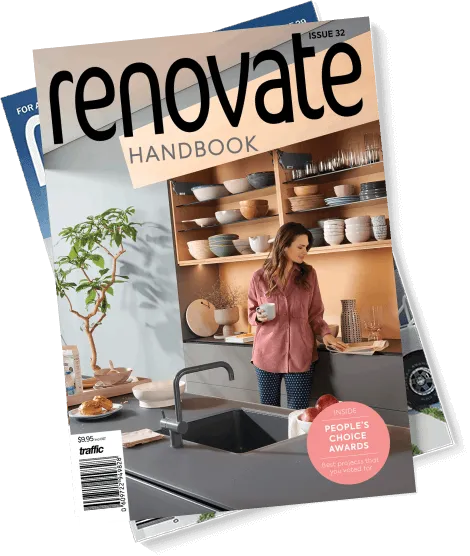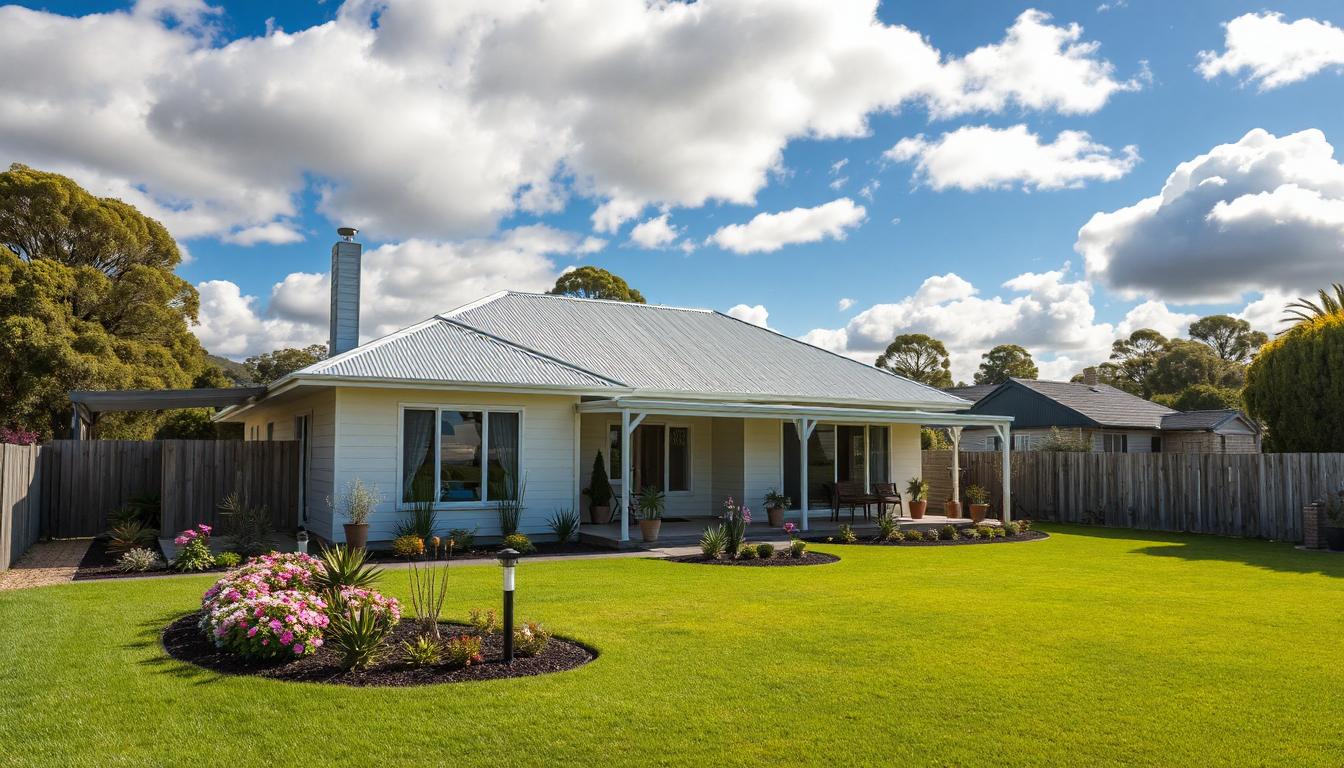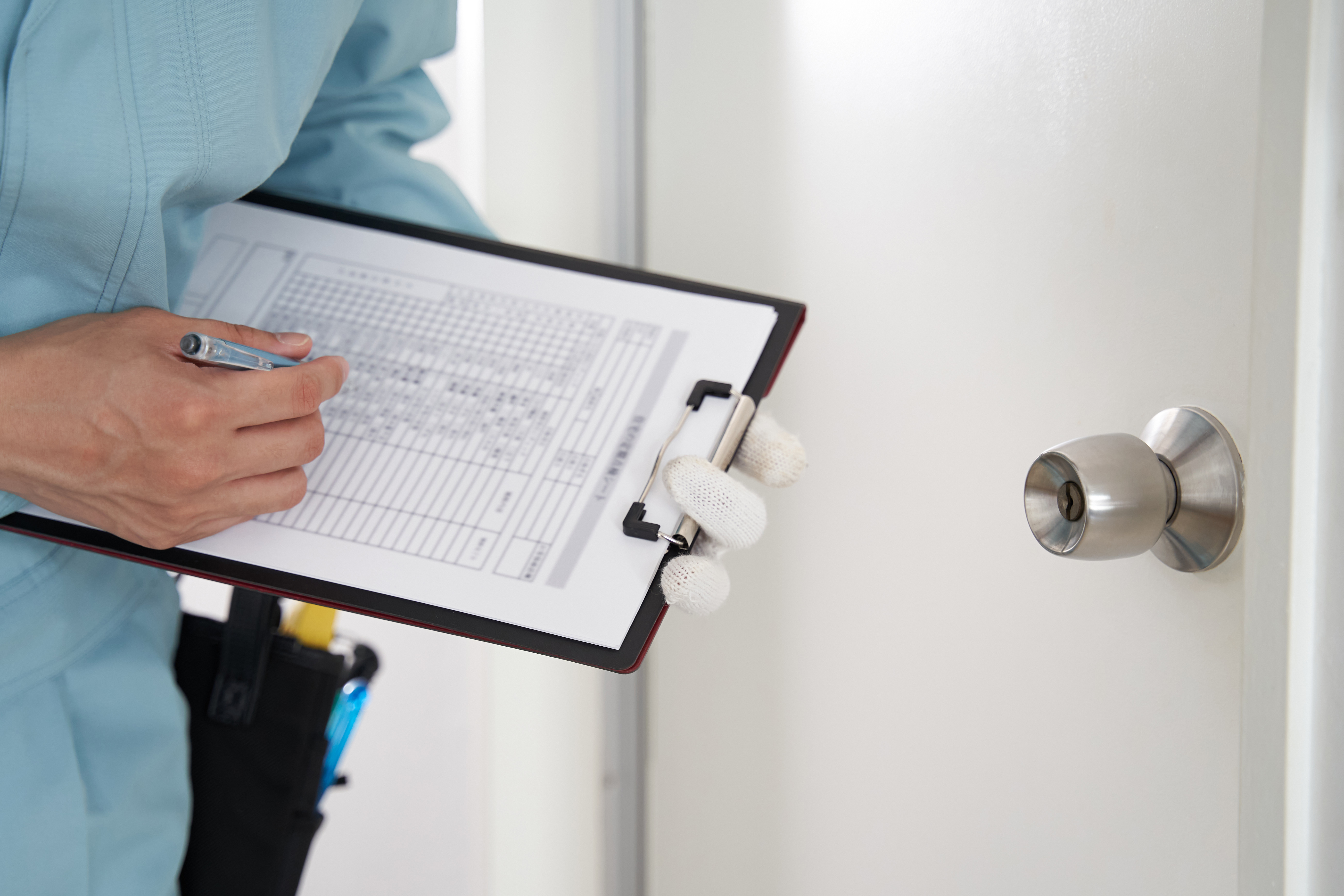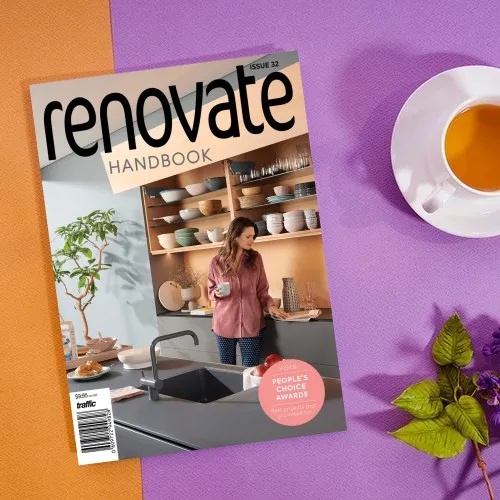Should I paint my home or hire a professional?
Painting your home might sound like a simple endeavour but have you considered the finer details?
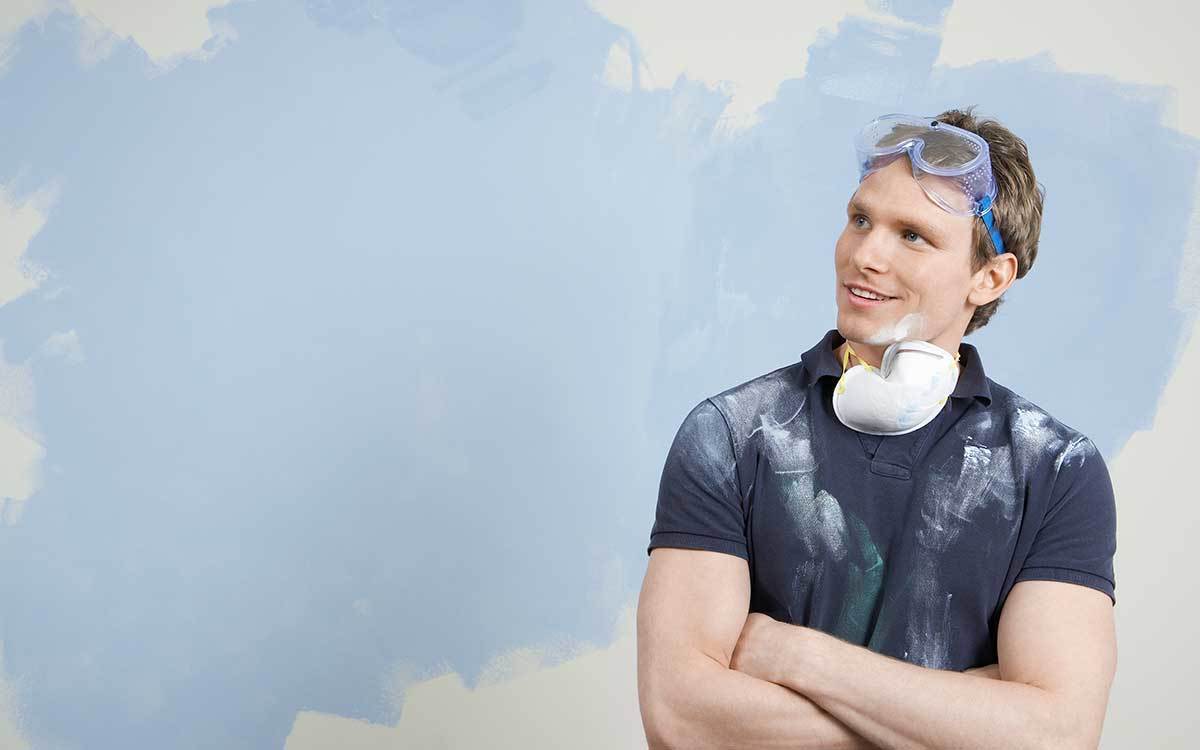
As the saying goes, “DIY is in our DNA”. Innovation, independence and being self-capable are all traits that us Kiwis pride ourselves on - but with any DIY project there comes a responsibility to carry out work safely and, ideally, to a high-quality finish. So what are some things to consider before you paint the interior or exterior of your home? In this painting guide, we cover everything you need to know to get started.
Painting my home interior/exterior - where to start
There are a few things that may have brought you to the conclusion that it’s time to paint your home. It might be that your home, or a room of your home, has recently been built and now it’s time to add the final touches. Perhaps the existing interior paint is fading and it’s time for a refresher. Or maybe you’re concerned that the deteriorating paint on the exterior of your home might lead to a build-up of moisture within the walls. Whether you’re updating, making over or trying to add value to your home - painting is a great place to start. But before you do, it’s important to consider what you’re getting yourself into.
What do I need to paint my home?
In any painting project, preparation is key. You’ll need the right materials - and these might differ, depending on your job requirements. Regardless of whether you are painting the interior or exterior of your home, your key materials and tools will likely include primer, sugar soap, drop cloths, masking tape, a paintbrush and, of course, paint. It’s essential that you also take the appropriate safety precautions e.g. a dust mask - but you can find out more about health hazard prevention in when should I leave painting to the professionals?
The steps you take to prepare your surface will depend on the condition of the wall. Original paintwork in a poor condition may need to be completely scraped, sanded and approached from scratch. In this case, you might also need to hire a professional gib-stopper to plaster the walls.
Even walls in a reasonably good condition will probably require some surface cleaning and possibly mould removal, gap/crack filling and sanding. At the very least, all walls should generally be sanded, dusted and cleaned before the priming and painting begins.

Painting the exterior of your home is very similar to painting the interior, only you will need to ensure resilience against the elements. In this case, use products which are specifically designed for exterior use.
Once you have prepared your surface, the painting can begin. Use a paintbrush to apply paint to any tricky areas. Depending on the surface, you might be able to use a paint roller for the majority of the project - which will make the work far less time-consuming. Two coats of paint is recommended.
If you would like a comprehensive step-by-step guide to painting the interior or exterior of your home, Mitre 10 provides some fantastic DIY resources.
When should I leave painting my wall to the professionals?
Before you begin any DIY work, it’s extremely important to be aware of any potential health hazards. Enter into your project with the mindset that any paintwork which was carried out 25-or-more years ago is probably lead-based. Asbestos can also be present in older paintwork.
In addition to the invisible health hazards, there are also physical hazards that can result from inexperience and complete accidents. With this in mind, your first step should always be to consider whether the savings involved in DIY are worth the potential risks.
Removing lead-based paint
Lead-based paint was the most commonly used paint in New Zealand up until the 1960s, when its associated health risks were discovered. Even if your home has been repainted in the last 25 years, there’s a chance that the original lead paint was simply painted over rather than removed. So, unless your home is a new build, assume the worst. Some lead-based paints are legal in New Zealand - however, they should clearly display this on the packaging.
Lead poisoning is no small matter and can go unseen for a long time. Young children and pets are particularly susceptible to lead poisoning. While stomach pains and difficulty sleeping are listed among the potential symptoms of lead poisoning, it’s not uncommon for the damage to go unnoticed. Left untreated, lead poisoning can be fatal.
Ask your local health officer to arrange a lead detection test. If it comes back positive, consider the risks before carrying out the removal work yourself. At the very least, ensure you wear a dust mask, use drop sheets, take precautions to reduce the spread of dust and store and dispose of the removed paint safely. The most important thing is to ensure you, your family and neighbours will not be inhaling the fumes. Keep children and pets at a distance, and, if you are at all concerned about carrying out the work yourself, consult a professional. For more information, visit www.health.govt.nz.
Asbestos in paint
Asbestos, on the other hand, can’t be tested for in paint. Asbestos was used throughout the build of most older New Zealand homes and the lung illnesses it can lead to often won’t become apparent until many years after a person has been exposed. Therefore, you should always take appropriate safety measures when removing paint, whether you opt for DIY or professional removal.
DIY injuries
Particularly if you are planning on painting the exterior of your home, don’t be careless with ladders and tools. According to ACC, DIY work results in approximately 35,000 injuries annually in New Zealand with more than 6,000 injuries being linked to people falling off ladders. Ensure your ladder is in good condition before you use it, position it safely and never try to use a ladder in place of scaffolding.
If you don’t feel confident or safe carrying out any of the above work yourself, it’s best to hire a professional.
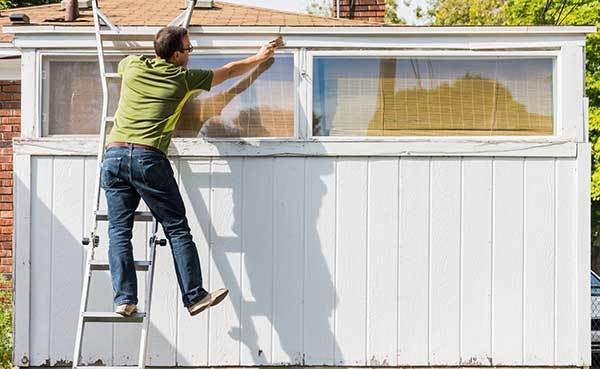
Choosing a colour for painting my wall
Yes, there are plenty of considerations to go over when painting your home, but the most difficult decision? Colour. With so many options, it can be oh so difficult to narrow your selection down to one perfect shade.
The rule of thumb in modern home interiors is that light is right. Light, neutral colours and shades tend to make rooms feel more spacious and relaxed. Trying to add value to a property? Neutral colours make it easy for new tenants and homeowners to bring their own personality to a new space.
Scandinavian design is particularly popular in home colour schemes around the world at the moment; featuring whites, blacks and wooden accents. Too many colours in one space can produce a feeling of too much going on. If you want to add a pop of colour to your paintwork, try to stick to one colour or consider creating a feature wall with neutral surrounding colours.
The room you are painting should also impact the colours you choose. Bright colours are best avoided in the bedroom - opt for muted colour palettes and calming colours instead, such as soft blues or lavender. Of course, you’ll also need to think about who will be using the room. For example, this elegant bedroom would suit someone with a classic, feminine style, while there is a clear contrast in this project between the bright pops of colour in the child’s bedroom in comparison to the more modern and sophisticated colour scheme in the master bedroom.
For each room within your home, try to think about how you want it to feel and then try to match this up to a colour. If you want to create a calm, peaceful atmosphere opt for subdued, yet light, colours. In more vibrant areas of the home you might want to experiment a little more with effects such as watercolour walls or colour-washing - see Resene’s painting effect ideas for further inspiration.
You might also find some inspiration in these newly painted rooms:
Interiors
- A minimalistic and luxurious bathroom design in St Heliers
- Raumati beach home makeover
- A fresh bathroom revamp in Queenstown
- Country ranch renovation
Exteriors
- Second storey house extension
- A full house renovation in Karori
- Subdividing, extending and renovating a property
When choosing a colour scheme for your home exterior, really consider your surroundings. What colours might complement them? You don’t just need to stick to one shade here - your roof, cladding and fixings might all have different colours which complement each other. The style of your house might also influence your colour scheme. You might want to restore an older home to its original colour scheme or give it an eclectic modernisation. Putting together a collection of images of house styles similar to yours in colour schemes that you are drawn to will help to get you on the right track.
How much will it cost to paint my home?
The cost of your painting work will vary depending on the condition of the surface, how many square metres you are planning on painting, whether you will be painting the interior or exterior of your home and if you will be carrying out the work yourself or hiring a professional. DIY costs will depend on what tools you already have on hand and how much paint you will need. Keep in mind that carrying out the work yourself can be very time-consuming, particularly if you will be painting weatherboards or uneven surfaces by hand. The following provides a rough guide to hiring a professional to paint your home interior or exterior.
Professional painters generally charge around $50 per hour. Combined with the required materials, this could end up costing you anywhere from $150 per m2, excluding additional aspects such as preparation, primer and painting trims.
How much will it cost to paint my house interior?
There are multiple steps involved in painting the interior of your home. Your walls might need repairs, which will incur additional costs (see how to repair a damaged wall for more information). Some walls will need more preparation than others, and some house styles, old villas for example, might involve a detailed level of hand painting. A modern home, on the other hand, might be easily and cost-effectively painted using a paint roller. So a project that simply requires a primer and two coats of easily-applied paint may cost only $150 per m2. Add in complicated trim work, and you could be looking at over $300 per m2.
Cost of professional interior painting
From $150 per m2
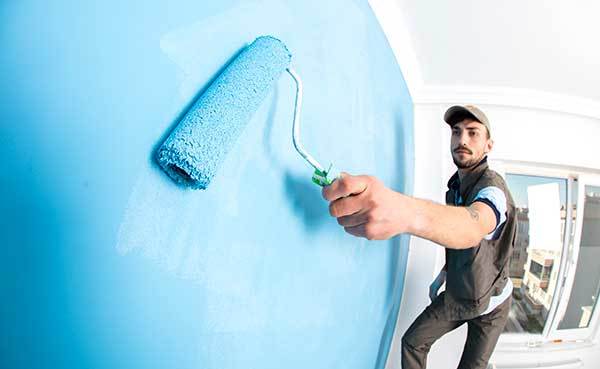
How much will it cost to paint my house exterior?
Exterior painting involves a few additional factors which can add to costs. Paints and materials designed for the outdoors will need to be used, but there is also the factor of height. Depending on the size of your home, scaffolding may be required to complete the job. While necessary, this can quickly add to costs.
Basic exterior paintwork starts from around $150 per m2. Additional requirements such as primer, painting fixings and painting the roof, could cost closer to $380+ per m2. Full exterior painting jobs often come with a certain amount of repair work. This might include replacing damaged cladding, checking for asbestos and sufficiently preparing the surface. For a standard weatherboard home, basic exterior repair work and painting could cost $20,000 or more. Allow far more room in your budget if the home’s power supply needs to be disconnected in order to access and repair the home.
There are multiple steps involved in painting the interior of your home. Your walls might need repairs, which will incur additional costs (see how to repair a damaged wall for more information). Some walls will need more preparation than others, and some house styles, old villas for example, might involve a detailed level of hand painting. A modern home, on the other hand, might be easily and cost-effectively painted using a paint roller. So a project that simply requires a primer and two coats of easily-applied paint may cost only $150 per m2. Add in complicated trim work, and you could be looking at over $300 per m2.
DIY advice
If you do decide to paint your home yourself, plan the work in accordance with the weather. Painting in cold or damp weather could lead to poor results, while painting in direct sunlight might lead to blistering paint. A shady spot on a clear day will provide the ideal painting conditions.
The pros and cons of DIY
While DIY might be the most affordable option, it’s not the safest. Before opting for this route, answer the following questions:
- Is your home over 25 years old? If so, have you had it inspected for lead-based paint?
- If asbestos or lead may be present in the paint, are there any children or pets nearby that might be affected? How can you reduce any health risks to you and your family?
- Will the project require scaffolding?
- Do you have the necessary equipment?
- Do you feel confident in your ability to carry out the work safely, to a high standard?
If you were unsure of how to answer any of these questions, you might feel more at ease working with a professional.
What to look for in a painter
When seeking out a professional painter, look for someone who is both qualified and experienced. While painters are not required to hold any qualifications, hiring someone who holds a National Certificate in Painting and Decorating will ensure you are entrusting your home to someone who has the experience to carry out the job to a high standard.
An experienced painter should also be able to advise you on colour selections, costs, scaffolding and related repair work.

Why Oncore?
Oncore will provide you with a fixed-quote before any work begins and will take care of quality control. This means that all you need to do is tell us what you need and we’ll take care of the rest! We pride ourselves on providing a high standard of customer service and endeavour to present you with the best result possible.
Get in touch
If you would like to discuss your painting project with a property maintenance specialist, please get in touch today to schedule a free consultation.
*Please note: This content is intended as a basic informational guide only and Oncore accepts no responsibility for DIY projects. For professional advice on your painting project, please consult your local Oncore director for further information. Cost estimates within this article are displayed as rough estimates only and are subject to change.
Read Next
All Oncore franchises are independently owned and operated.
Processing...
Talk to a maintenance specialist today
Oncore specialises in doing everything related to taking care of your home, building or office. Get in touch today!

